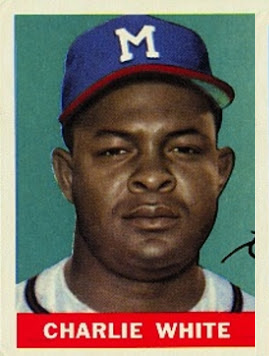1954 Milwaukee Braves - 89-65 (8 GB)
2 years removed from a 7th place finish in their final season in Boston the Braves were in the midst of an incredible run in Milwaukee, where they would never finish below .500 in 13 seasons. As late as June 1st the team held a share of the lead in the NL then fell on hard times falling behind the Giants by double digits. An incredible early August run saw them get to within 3 1/2 games by the middle of the month. As late as September 13th they were 4 1/2 back, but the Giants put things away and the Braves had to settle for being also rans as they would do for four straight seasons before finally winning it all in 1957.
STRENGTHS: Youth. The average age of the Braves was 26.3 years. Futher HOF'ers Hank Aaron (20) and Eddie Mathews (22) had their best years ahead of them. Mathews was compiling numbers like no NL third baseman had ever compiled before him (.290-40-103). Catcher Del Crandall (.242-21-64) would have been an All-Star if that Campanella guy wasn't playing lights out in Brooklyn
WEAKNESSES: Youth. The exuberance of youth also contributed to their prolonged losing streaks mid season. Surprisingly they finished 6th in the league in runs and fifth in homers.
PITCHING: Pencil Warren Spahn (21-21, 3.14) in for another one of his 20 win seasons. Lew Burdette (15-14, 2.76) and Gene Conley (14-9, 2.96) were an awesome 2-3 combo. The team struggled to find a viable 4th starter. Chet Nichols (9-11, 4.41) was not the answer, but Jim Wilson (8-2, 3.52) showed promise.
BULLPEN: Dave Jolly (11-6, 2.43, 10 sv) was rock solid finishing out games when the starers faltered. Ernie Johnson (5-2, 2.84, 2 sv) did a great job in a setup role. The rest of the pen was pure hit or miss.
BENCH: Average at best. George Metkovich (.276-1-15) is the best of the bunch. Not much pop here at all. An over the hill Bobby Thomson (.232-2-15) was 30 going on 45. Spahn might get pressed into pinch hitting duties when he's not on the hill due to his .208-1-10 line. Spahn hit at least 1 home run in 17 straight season with the Braves from 1948-1964
To finish off their team set I had to add 3 new cards


























































